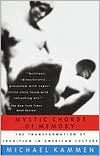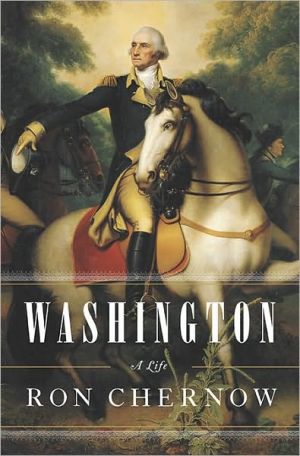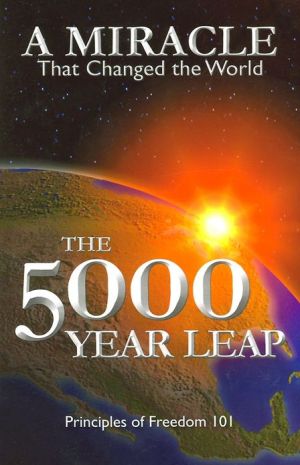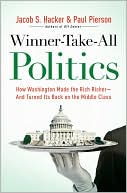Mystic Chords of Memory: The Transformation of Tradition in American Culture
Search in google:
With the same exacting scholarship, brilliant cultural analysis, and stylish prose that won him a Pulitzer Prize for A Machine That Would Go of Itself, Kammen examines the ... Publishers Weekly In 1942, during the intermission in a Metropolitan Opera broadcast performance, Walt Disney commented that "Dopey is as well qualified as I am to discuss culture in America," adding that even the word "culture" had "an un-American connotation... as if it thought it was better than the next fellow." In Kammen's view, Disney's rejection of the elite connotations of "culture" is emblematic of conflicted U.S. attitudes--since the formation of the Republic, and particularly in this century--toward art, leisure, entertainment and pleasure. Kammen, a professor of American history and culture at Cornell, and the winner of a 1973 Pulitzer Prize for People of Paradox, attempts to chart how Americans have defined and controlled culture--by inventing such categories as low-, middle- and highbrow, by funding and de-funding the National Endowment for the Arts--as well as how advertising, mall culture and economic fluctuations affect attitudes about culture. Drawing on the work of such theorists as Raymond Williams, Dwight McDonald and Herbert Marcuse, and on such varied examples as The Simpsons, jigsaw puzzles, Walter Winchell's gossip columns, the poetry of Walt Whitman, Andy Warhol's art and the Book-of-the-Month Club, Kammen explores how our endless cultural skirmishes not only reflect but also change how we view citizenship and democracy. Though Kammen's writing is clear and his insights illuminating and provocative, his arguments are dense and often purely theoretical, and may be hard going for uninitiated readers. (Aug.) Copyright 1999 Cahners Business Information.
\ Publishers Weekly - Publisher's Weekly\ In 1942, during the intermission in a Metropolitan Opera broadcast performance, Walt Disney commented that "Dopey is as well qualified as I am to discuss culture in America," adding that even the word "culture" had "an un-American connotation... as if it thought it was better than the next fellow." In Kammen's view, Disney's rejection of the elite connotations of "culture" is emblematic of conflicted U.S. attitudes--since the formation of the Republic, and particularly in this century--toward art, leisure, entertainment and pleasure. Kammen, a professor of American history and culture at Cornell, and the winner of a 1973 Pulitzer Prize for People of Paradox, attempts to chart how Americans have defined and controlled culture--by inventing such categories as low-, middle- and highbrow, by funding and de-funding the National Endowment for the Arts--as well as how advertising, mall culture and economic fluctuations affect attitudes about culture. Drawing on the work of such theorists as Raymond Williams, Dwight McDonald and Herbert Marcuse, and on such varied examples as The Simpsons, jigsaw puzzles, Walter Winchell's gossip columns, the poetry of Walt Whitman, Andy Warhol's art and the Book-of-the-Month Club, Kammen explores how our endless cultural skirmishes not only reflect but also change how we view citizenship and democracy. Though Kammen's writing is clear and his insights illuminating and provocative, his arguments are dense and often purely theoretical, and may be hard going for uninitiated readers. (Aug.) Copyright 1999 Cahners Business Information.\ \ \ \ \ Publishers Weekly - Publisher's Weekly\ Kammen's massive study makes an important contribution to our understanding of how Americans define themselves and the parameters of freedom. Illustrations. (Feb.)\ \ \ Library JournalWithin the last ten years, many American historians have discovered the importance of collective ``memory'' in shaping their nation. In some respects following the lead of influential historians from other nations, they now try to understand the forces that shaped the ways in which Americans remember and use their past and what significant events altered their consciousness of history. Long before recent scholars began decrying the dominance of obscure monographs and calling for greater convergence of ideas in historical studies, Kammen had demonstrated that synthesis could be accomplished without sacrificing richness of detail and divergent interpretations. Moreover, he showed that historians could communicate with one another and a wider audience at the same time. This book, part of Kammen's multivolume rethinking of American history, presents his view of the growing dependence on and debate over collective memory as a historical force during four periods since 1870. With great skill he distinguishes the ways Americans adapted their views of the past to fit the needs of their present circumstances. He weaves a command of formal cultural history with a thorough understanding of popular culture into an astonishingly wonderful book that enlightens not only the history of the past century and a quarter but also the present.-- Charles K. Piehl, Mankato State Univ., Minn.\ \ \ \ \ BooknewsKammen (American history and culture, Cornell U.) examines the roles of tradition, collective memory, and patriotism in American society--and the transformations they have undergone, especially in the generations since 1870. Annotation c. Book News, Inc., Portland, OR (booknews.com)\ \ \ \ \ Kirkus ReviewsAn ambitious, wonderfully detailed investigation into the shifting perceptions of American cultural identity from Pulitzer Prize-winner (People of Paradox, 1973) Kammen (American History and Culture/Cornell; A Machine That Would Go of Itself, 1986, etc.). Taking his title from Lincoln's First Inaugural Address plea for national unity, Kammen asserts that, particularly in times of upheaval, "a usable past has been needed to give shape and substance to national identity." Thus, the broad chronological division of the book into three postwar periods: 1870-1915, when the trauma of civil war and an influx of immigrants made history a mechanism for social and political unification; 1915-45, during which time the tensions of memory and modernism, populism and elitism, combined to forge a uniquely American aesthetic; and 1945- 90, an era of "amnesia" encompassing an intense interest in things historical and a shocking lack of specific knowledge. Throughout, the author masterfully untangles the threads of myth, tradition, and nostalgia underlying the curious "ambiguities and dualisms" of a nation stubbornly devoted to both past and future vision. Hence, there arose such very American anomalies as Henry Ford following up his transformation of working life and leisure (and his oft-quoted remark that "History is more or less bunk") with obsessive collecting and the creation of two "living" museums. Splendidly inclusive in the best, most delightful vein of intellectual history, in which no cultural artifact is discounted as trivial, Kammen's study offers a liberal sampling of high and low culture—literature and popular reading material; pageants and parades; art, architectural, and designtrends; museums, theme parks and monuments—as well as a nice dollop of historiography and a careful consideration of similar movements abroad. Admirable, perceptive, and refreshingly well balanced—a daunting task superbly accomplished. (One hundred and forty-five illustrations—not seen.)\ \








